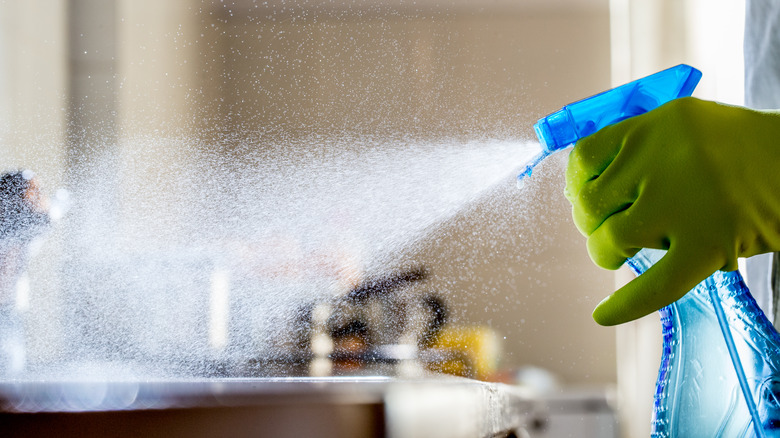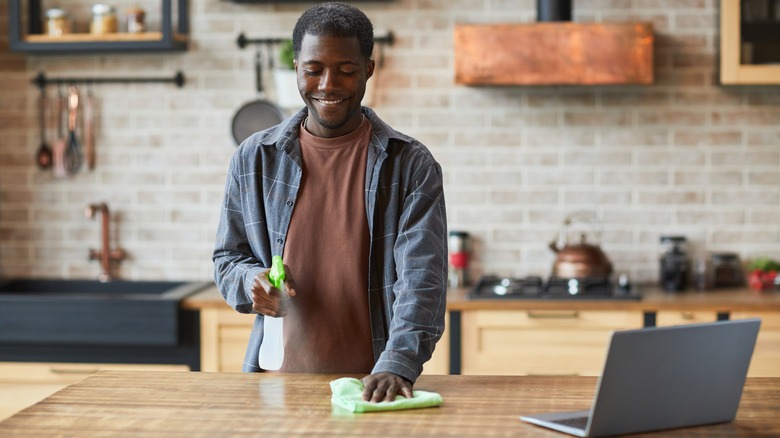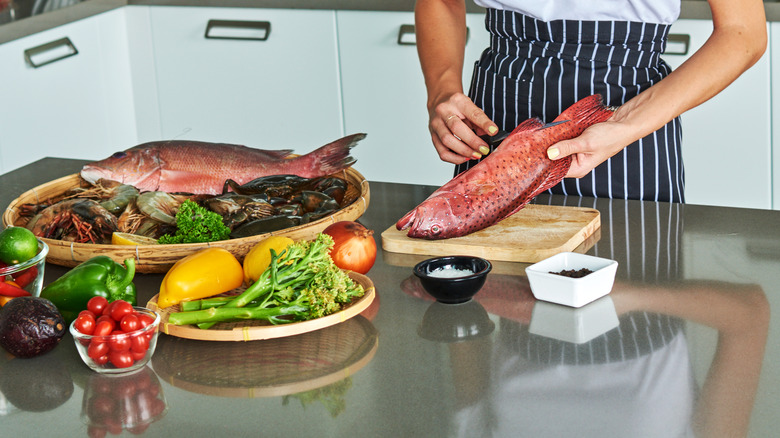Is Only Using Water To Clean Your Home A Good Idea? Here's What You Should Know
From repurposing old or unwanted items around the house to limiting their use of harsh chemicals, people nowadays are always looking for ways to be more eco-friendly. Reducing toxins in your home is one way to better the health of the environment and your household. DIY cleaning recipes and all-natural products are popular methods for tidying up without any harsh chemicals, but there is an even more sustainable DIY cleaning liquid – water. Yes, you can eliminate soils and freshen up your home with regular tap water.
Substituting store-bought or homemade cleaners for water is completely eco-friendly, saves you money, and can improve the air quality inside your home since you won't be breathing in toxic fumes. Water is a universal solvent, meaning it can dissolve chemicals and is buoyant, so debris floats on its surface. It won't tackle all your tough messes or kill bacteria, but with water, you can shine appliances, dust countertops, and mop floors, yielding similar results as if you used your favorite cleaner. However, this technique requires the proper tools to ensure your home is thoroughly cleaned.
You can clean multiple surfaces with just water
For your everyday clean-ups, tap water and a microfiber cloth are enough to get your home spotless. Microfiber strands are super fine (thinner than a hair stand) and can capture dust, bacteria, and viruses in their threads. Simply spray your countertops and walls with H2O, then wipe the surface with a microfiber cloth to remove light soils and dust. You only need water to scrub your floors, too. The physical scouring done with the mop is what really cleans your floors, not the chemical solutions. If you damp the mop with water and scrub the tiles, vinyl, or hardwood, they'll be just as clean as they would be if you used vinegar or Pine-Sol.
Your stainless steel and glass materials can shine with a little bit of water. To polish stainless steel appliances, wipe the surface with a microfiber cloth dampened with warm water, then use a dry cloth to wipe along the metal gain. This will buff out any grime or dust without leaving streaks. For glass tops, use a squeegee to clear the excess water after wiping with the damp microfiber towel.
Water also comes in handy during those seasonal deep cleans to refresh out-of-reach areas. Anything above eye level, like the ceiling, lighting, upper walls, and trim, can be cleaned with water. Just spray the mophead or microfiber cloth and wipe down these high spots. But ensure the lights are off before you clean any light fixtures or bulbs. While plain water can tackle lots of messes, there are soils where water alone won't suffice.
When water alone won't cut it
You'll need more than just water to eliminate messes consisting of fat or oil. Think about those greasy dinner plates that need heavy-duty dish soap to get squeaky clean. Oil-based messes on kitchen fans, cabinets, or just small spills of cooking oil need grease-cutter solutions like soap to absorb the residue. Sticky soils caused by grease buildup that can coat cabinets or the areas above stovetops will need a degreaser after being wiped with a paper towel or cloth.
Whether cleaning with hot or cold water, H2O can't sanitize or disinfect your surfaces. While water and a microfiber cloth make a great duo to trap bacteria and viruses, water doesn't kill the pathogens. If someone in your household is sick, you're handling raw meat, or you want to de-germ high-touch areas like light switches and doorknobs, you should clean the surface with water first; then you'll need to use a sanitizer or disinfectant, like diluted bleach, after.


